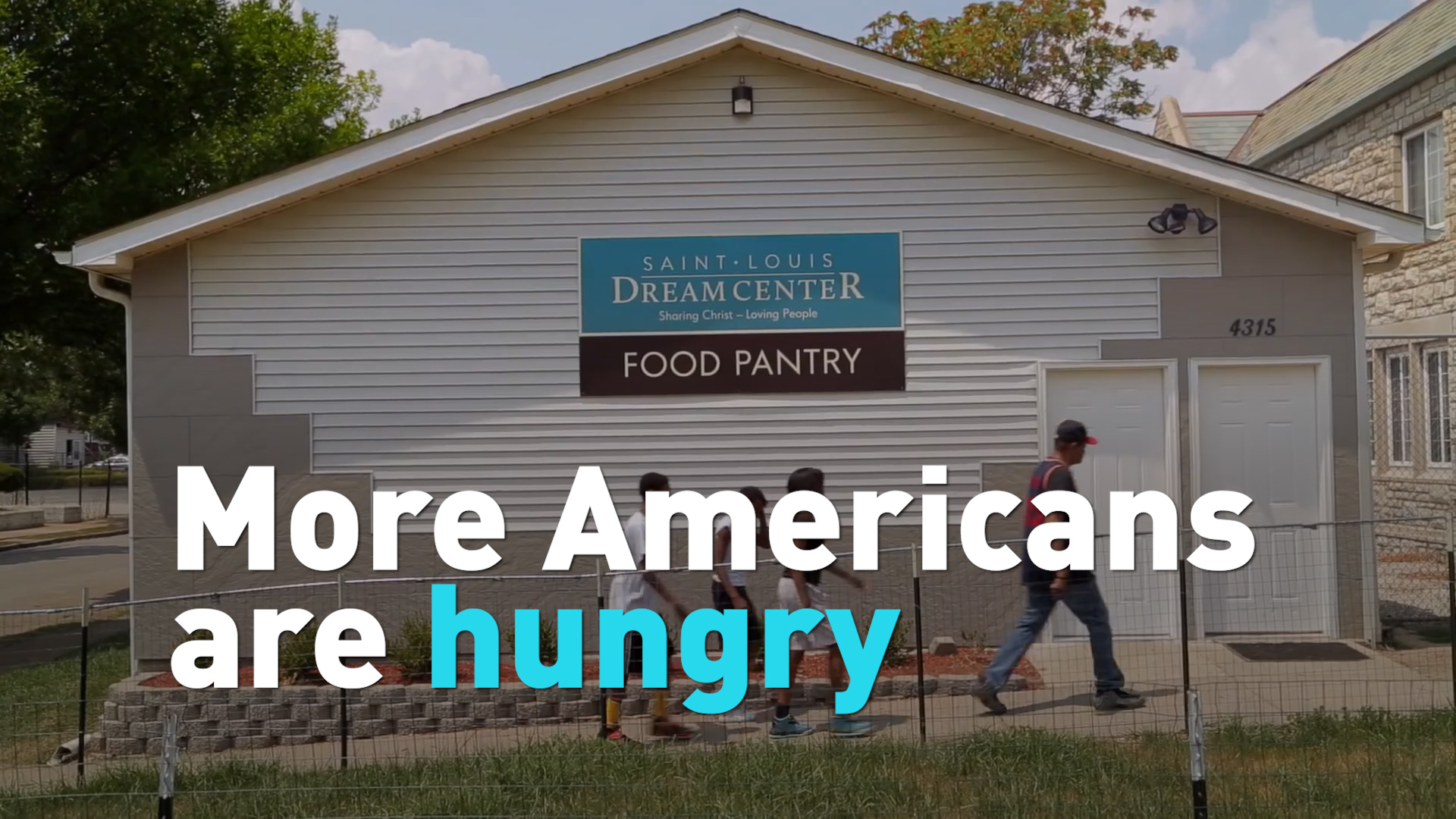01:11

Across the United States, food banks are facing strains like never before.
More than 22 million people are newly unemployed since the COVID-19 pandemic prompted the U.S. to declare a national emergency and issue stay-at-home guidelines four weeks ago.
Many of the 30 million school-aged children who depend on the National School Lunch Program for free and reduced price meals are now at home.
Food banks have reported a halt in donations from sources such as restaurants that are now closed.
Donations from grocery stores are also down due to panic buying by consumers.
Volunteers are dwindling too, as some worry about interaction with people during this time of social distancing.
The Families First Act passed by Congress last month added $15 billion to the Supplemental Nutrition Assistance Program known as SNAP.
But for 40% of families who currently use SNAP - the poorest of recipients -- their benefits won't change.
People are waiting in lines for hours at food banks.
"Meals on Wheels" programs for the elderly have had to cut back on deliveries.
The nonprofit Feeding America estimates that 30%-50% of people using food banks now are doing so for the first time.
The organization estimates it will need $1.4 billion more in funding to sustain operations for 200 food banks over the next six months.
"It is all of our neighbors who now more than ever need help putting food on their tables," Claire Babineaux-Fontenot, CEO of Feeding America said.
Check out The China Report, our new weekly newsletter. Subscribe here!